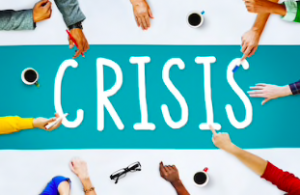Puzzling Together a Communication Plan

Writing a communication plan is standard for public relations practitioners. A communication plan serves as a blueprint for how one will implement a campaign. It takes careful planning to construct and attention to detail before implementing. This is also the case when composing a puzzle.
To begin, a practitioner has to have a client to pitch a communication plan. This client gives the practitioner a clear overview of what is wanted. The practitioner must then construct the communication plan. The same can be said if we are going to piece together a puzzle. We must ask ourselves if we want to assemble a European, romantic work by Anatolian, Ravensburger or perhaps a sweeping landscape by Clementoni. Whichever we choose, the puzzle is our plan. We will use this Ravensburger as a reference guide in the steps outlined below.
Step 1: State the problem
Constructing the problem statement — such as X brand lacks brand recognition — is usually the easy part in writing a communication plan. The client often comes to you with this information.
At this point, the initial problem with crafting a puzzle is how are we going to put this masterpiece together? It can take up to 30 minutes just to sort out the fragments of a 1,000-piece puzzle. Yikes!
Step 2: List the publics
In this step, a practitioner identifies which publics the client is trying to target with a campaign. By breaking down publics by demographics, psychographics, lifestyle variables and geographic, we will have a better idea of who we need to reach. These categories answer questions like what are their ages, incomes, geographical locations, gender, job titles; are they a mother, student, etc.; what types of activities they like and so on.
At this phase of assembling our puzzle, we should be treating our pieces like publics. Separate them into categories like edge and corner pieces and by colors … do these yellow pieces belong to a streetlight, a window or the candle on the table? When categorizing by objects, think “I have multiple sets of flowers, so where do they go?”
Step 3: Narrow down to priority publics
Now a practitioner should focus on about three publics that they want to target. Here, we list out the objectives, strategies and tactics for each public. Examples of an objective, strategy and tactic are as follows: objective — raise awareness for X brand among millennials by 20 percent in two months; strategy — use social media to spread information about X brand; tactics — use Facebook, Instagram and Twitter to communicate directly to audiences.
Back on our puzzle journey, we will do the same thing. Our objective is to finish a 1,000-piece puzzle in two weeks. This task can be strenuous, especially when we have classes five days a week and a multitude of extracurricular responsibilities. The things we do for our futures! Our strategy will be to reserve a section of time each day to work on our opus. This time could be an hour or just 10 minutes. Our tactic is undoubtedly to stop aimlessly exploring YouTube for hours every evening so that we have time to actually complete the puzzle. Simple, right?
Step 4: Evaluation
The practitioner will provide recommendations for measuring the effectiveness of the plan’s tactics. Decide how the tactics — Facebook, Instagram and Twitter — can be measured. For this we will look at the number of likes, re-tweets, mentions, comments and other analytics that social media provides.
After learning to implement the latest Keto diet from our YouTube binge (oops), we should evaluate the tactics for our creation. This step will be measured by whether we were able to focus and complete parts of our puzzle. Hypothetically, we can say that we were able to get some of it complete.
Step 5: Timeline
Take all of the information one has compiled thus far and make a timeline of implementation. This includes the first piece of information one produces and disseminates to the final product rollout and everything in between.
We will do the same for our puzzle. Write down a schedule of how much time we will spend each day working on this gem. If we follow it closely, we can finish off this puzzle in no time. Remember to add in breaks for food, water and Instagram.
Step 6: Budget
Finally, the practitioner must think of any cost that the client will accumulate to implement this plan. Include research measures, possible advertising, promotional materials, items for events and yourself — working on a retainer requires a structured spreadsheet.
While we don’t have a budget for assembling this pièce de résistance, we should consider a price range. Puzzles can range from barely any cost up to $109 or more.
By following these steps, the practitioner is sure to have a thoroughly executed communication plan which will keep clients coming back. We will have a new puzzle that we can frame and put on display for guests! We could also be 20 pounds lighter … well, if we actually stuck to that Keto diet; I didn’t!
–
Trenton Brasfield is a senior at The University of Alabama majoring in public relations and minoring in sociology. After graduation, he plans to obtain a masters in global strategic communications, and work in international communications. You can contact him on Instagram or LinkedIn.


Thanks for the tips. Really useful!